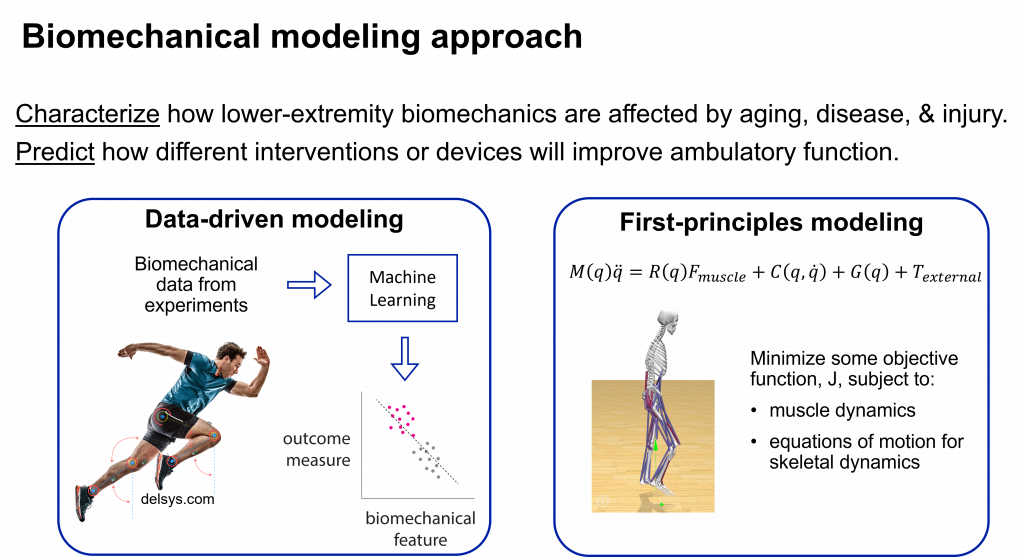Goal and VIsion
Our goal is to develop predictive models to guide individual-specific clinical decision-making for improving mobility function. Our vision is that these models could enable clinicians and other rehabilitation scientists to better prescribe rehabilitation interventions, develop assistive devices, tune patient-specific control of robotic devices such as exoskeletons, and more.
Current Research Areas
Much of our current research falls into two broad categories:
- Identifying which biomechanical and/or physiological signals are important to include as inputs to these models and how this differs across patient populations.
- Graduate Students: Grant Maddox, Kaitlyn Downer
- Past and Current Funding: NIH R15AG068935, NIH R21AG067388, NSF 2245650
- Developing models that can predict improvement with rehabilitation, devices, etc.
- Graduate Students: Mohammad Rahimi-Goloujeh, Kaitlyn Downer
- Past and Current Funding: NSF 2245650, NSF CAREER 2339331
Other ongoing research is related to:
- Mechatronics for human-device interaction to test out hypotheses on human movement and novel rehabilitation strategies
- Monitoring balance “in-the-wild” via wearable sensors
- Collaboration, outreach, and education with patients and clinicians to ensure our work has clinical applications
Research Techniques
